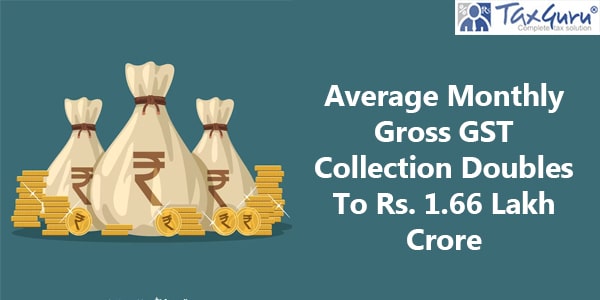In a significant announcement during the Interim Budget 2024-25, Union Minister for Finance and Corporate Affairs, Smt. Nirmala Sitharaman, highlighted the remarkable success of the Goods and Services Tax (GST) regime in India. The minister emphasized the positive impact of GST on trade and industry, reducing compliance burdens and optimizing supply chains.
Detailed Analysis:
1. Doubled Monthly GST Collection: Smt. Sitharaman revealed that the average monthly gross GST collection has witnessed a substantial increase, nearly doubling to ₹1.66 lakh crore. This surge reflects the effectiveness of GST in enhancing tax revenues.
2. States’ SGST Revenue Buoyancy: States’ State Goods and Services Tax (SGST) revenue, including compensation, achieved an impressive buoyancy of 1.22 in the post-GST period (2017-18 to 2022-23). This contrasts sharply with the pre-GST period (2012-13 to 2015-16), where the tax buoyancy was a mere 0.72.
3. Consumer Benefits: Minister Sitharaman underscored that the primary beneficiaries of the GST are consumers. Reductions in logistics costs and taxes have led to a decline in the prices of most goods and services, resulting in tangible advantages for the end consumers.
4. Industry Perception: Citing a survey by a leading consulting firm, the Finance Minister noted that 94% of industry leaders view the transition to GST as largely positive. Moreover, 80% of respondents believe that GST has facilitated supply chain optimization.
5. Customs Efficiency: Quoting the National Time Release Studies, the Finance Minister highlighted the steps taken in Customs to enhance international trade facilitation. Notably, there has been a significant reduction in import release time at various depots and ports, contributing to more efficient trade practices.
Conclusion: The Interim Budget 2024-25 unveils a promising financial landscape with the success of GST taking center stage. The doubled monthly GST collection, coupled with increased state revenues, reflects the positive outcomes of this tax reform. Consumers emerge as the major beneficiaries, enjoying reduced prices and a more streamlined supply chain. As India continues its economic journey, the efficiency of Customs procedures further adds to the overall positive narrative, signaling robust trade facilitation.
****
AVERAGE MONTHLY GROSS GST COLLECTION DOUBLES TO ₹1.66 LAKH CRORE
STATES’ SGST REVENUE ACHIEVES BUOYANCY OF 1.22 IN POST-GST PERIOD
BIGGEST BENEFICIARIES OF GST ARE CONSUMERS, SAYS FM
Posted On: 01 FEB 2024 12:43PM by PIB Delhi
The Union Minister for Finance and Corporate Affairs, Smt. Nirmala Sitharaman, while presenting the Interim Budget 2024-25 in Parliament today asserted that by unifying the highly fragmented indirect tax regime in India, GST has reduced the compliance burden on trade and industry.
“According to a recent survey conducted by a leading consulting firm, 94 per cent of industry leaders view the transition to GST as largely positive and according to 80 per cent of the respondents, it has led to supply chain optimization” she said. Smt. Sitharaman further added that at the same time, tax base of GST more than doubled and the average monthly gross GST collection has almost doubled to ₹ 1.66 lakh crore this year.

Talking about the increased revenue of States, the Finance Minister said that States’ SGST revenue, including compensation released to states, in the post-GST period of 2017-18 to 2022-23, has achieved a buoyancy of 1.22. In contrast, the tax buoyancy of State revenues from subsumed taxes in the pre-GST four-year period of 2012-13 to 2015-16 was a mere 0.72. The Union Finance Minister asserted that the biggest beneficiaries are the consumers, as reduction in logistics costs and taxes have brought down prices of most goods and services.
Quoting the National Time Release Studies, the Minister said that the steps taken in Customs to facilitate international trade has resulted in a decline in the import release time by 47 per cent to 71 hours at Inland Container Depots, by 28 per cent to 44 hours at air cargo complexes and by 27 per cent to 85 hours at sea ports, over the last four years since 2019.
*****




